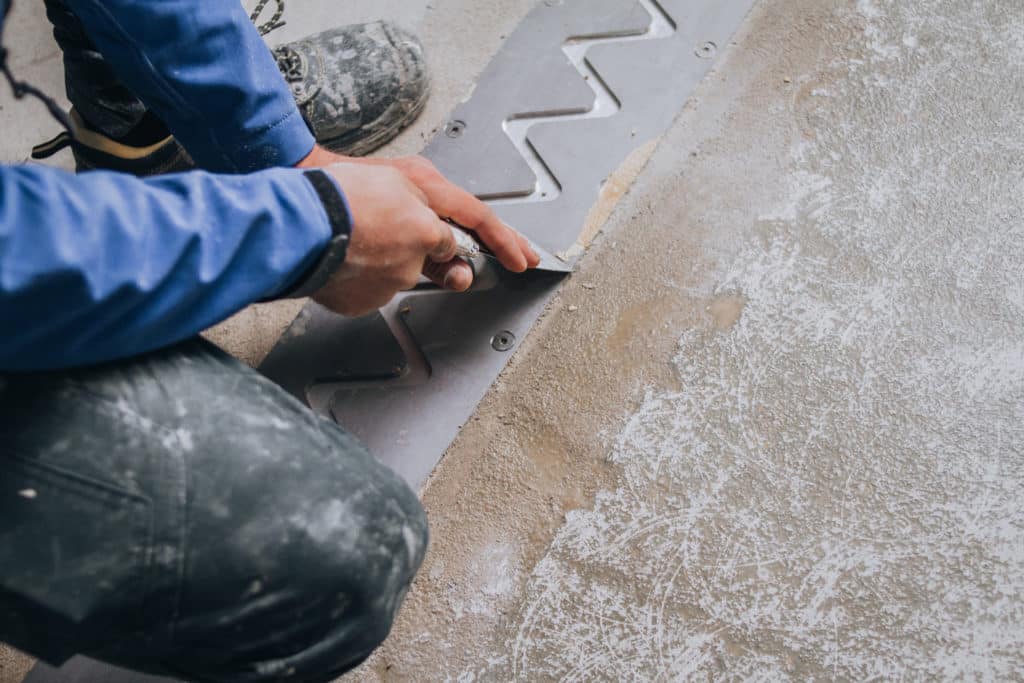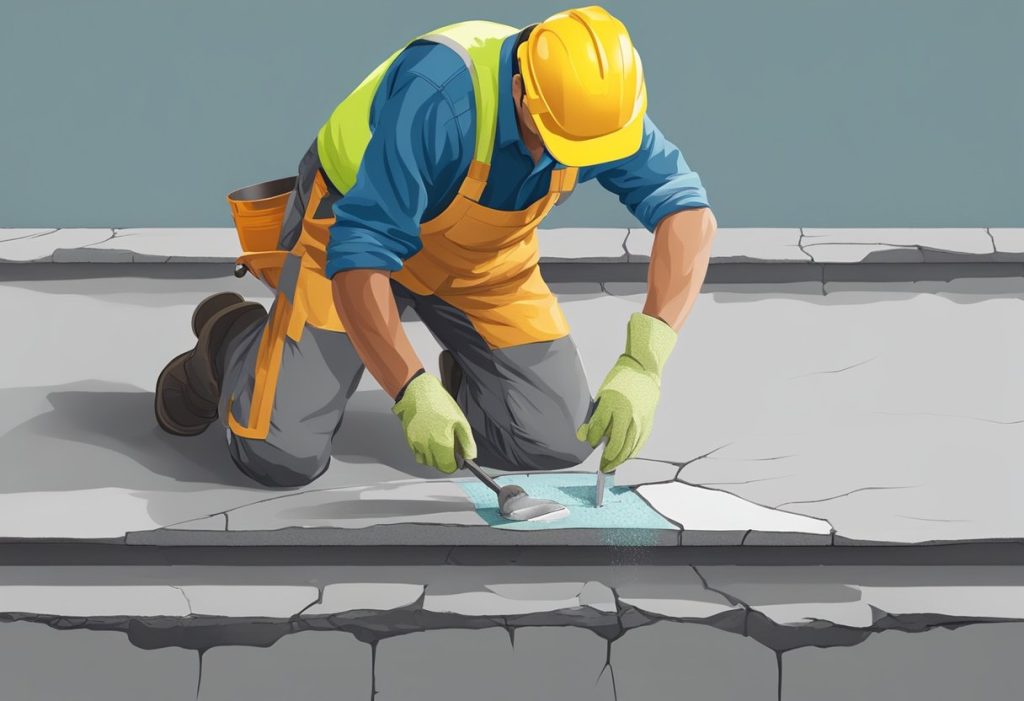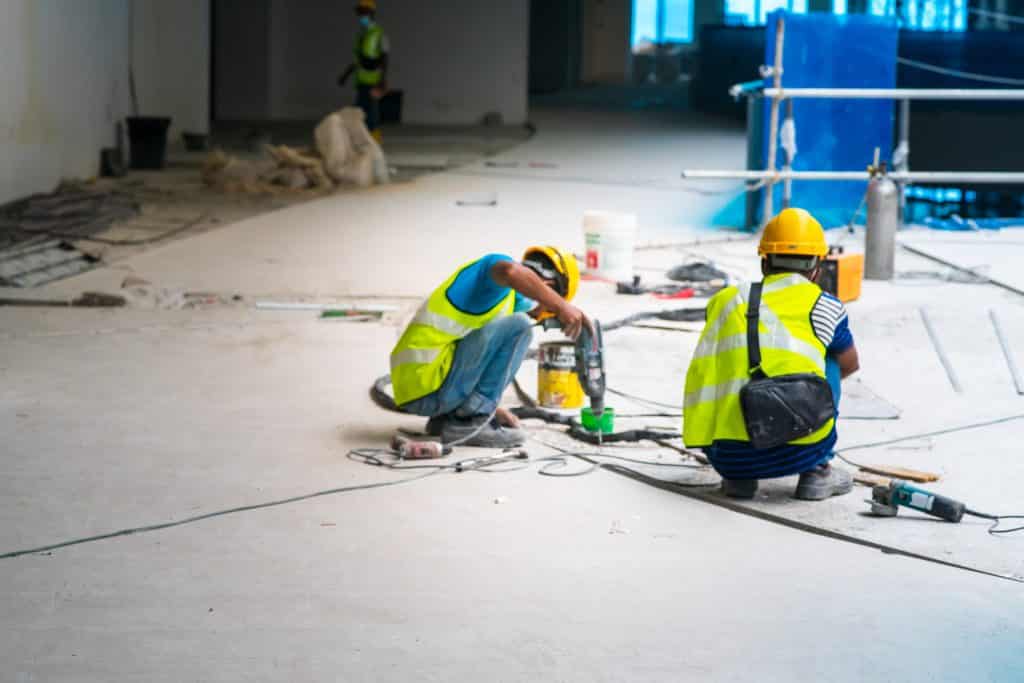Maintaining the integrity of a concrete driveway is crucial for homeowners. Over time, driveways endure a range of harsh conditions, which can lead to cracks, chips, and other surface imperfections. Addressing these issues promptly with a concrete driveway patch can prevent further deterioration and maintain the property’s aesthetic appeal. Driveway repair isn’t just about looks; it’s also about extending the life of the concrete surface and ensuring it remains safe for vehicles and pedestrians.

Selecting the right patching materials is essential for a durable repair. Concrete patches are specifically formulated with polymers and additives, enhancing their adhesion and flexibility compared to standard concrete mixtures. Products vary from ready-to-use formulas to those requiring mixing, accommodating different repair sizes and depths.
A successful repair involves more than just filling cracks. The process includes proper preparation of the damaged area, application of the patching material, and adequate curing time. With careful execution, concrete driveway repairs can blend seamlessly with the existing surface, making the driveway look revitalized and well-maintained.
Learn more about driveway concrete repairs or explore a selection of concrete repair products at The Home Depot.
Assessing Concrete Driveway Damage

When examining concrete driveway damage, it is crucial to distinguish between superficial issues and those signaling deeper problems. The assessment helps determine the most suitable repair approach.
Identifying Small Vs. Large Cracks
Small Cracks:
- Width: Less than 1/4 inch
- Characteristic: Typically superficial
Small cracks are usually signs of natural settling and minor shrinkage. These are common and often can be easily filled or sealed.
Large Cracks:
- Width: Greater than 1/4 inch
- Characteristic: May indicate structural issues
Large cracks might be a consequence of more serious settlement, overloading, or inadequate subbase. They require a thorough assessment to identify the underlying cause before proceeding with the repair.
Understanding Freeze-Thaw Cycles
Freeze-Thaw Cycles:
- Mechanism: Water enters cracks, freezes, and expands
- Impact: Can exacerbate cracks over time, increasing damage
In regions experiencing freeze-thaw conditions, it’s important to evaluate how these cycles have affected the concrete’s integrity. The repeated process of water freezing and expanding within cracks can cause them to widen and deepen, potentially leading to substantial structural damage.
Materials and Tools for Driveway Repair

When embarking on a DIY driveway repair project, selecting the appropriate materials and tools is critical for a successful outcome. This includes choosing a suitable concrete mix and gathering all the necessary equipment to ensure a smooth application and durable finish.
Choosing the Right Concrete Mix
For small to medium repair tasks, such as filling cracks or evening out small patches in a driveway, a high-quality concrete patch compound is essential. Products like Polymer-modified concrete mix provide greater flexibility and adhesion compared to traditional mixes. An example is Quikrete, a quick-setting concrete mix that is often recommended for its ease of use and reliable results. These compounds usually integrate sand and cement with other additives to improve performance.
If the repair task is more extensive or if the driveway needs significant resurfacing, a standard concrete mix consisting of Portland cement, sand, and gravel might be more appropriate. It is essential to assess the specific needs of the repair to decide whether a patch product, a full mix, or even an epoxy patch is the best choice.
Necessary Tools for Patching
A variety of tools are needed to properly apply concrete mix and achieve a smooth, level driveway surface:
- Pressure washer: To ensure proper adhesion of the concrete patch, the driveway should be thoroughly cleaned beforehand, making a pressure washer invaluable for removing debris, dust, and old sealant.
- Caulk gun & one-part polyurethane sealant: Sealants are used to fill and seal cracks before patching.
- Wire brush or shop vacuum: These tools are helpful in cleaning out the cracked areas after washing and before patching.
- Oscillating multi-tool with a grinding wheel: It can be used to remove any excess or loosely adherent material.
- Pointing trowel: For applying and smoothing patching compound.
- Spray bottle with water: Moistening the repair area can help the new concrete patch to cure properly and adhere better to the old concrete.
- Nitrile disposable gloves: To protect your hands while mixing and applying concrete patch materials.
Most of these tools and supplies, including Quikrete products, can be found at a Home Depot or any similar home improvement store. Properly equipped, homeowners can efficiently tackle driveway repairs with confidence.
Concrete Driveway Repair Techniques

When it comes to repairing a concrete driveway, the key to longevity and aesthetic appeal lies in thorough preparation and using the right materials for the job. Whether dealing with minor cracks that cause discoloration or more significant fissures, each scenario requires specific techniques to ensure a long-lasting repair.
Preparing the Damaged Area
Before any repair work begins, it is crucial to thoroughly clean the area to remove any loose debris, dirt, or contaminants that might affect the adherence of the patching material. Using a pressure washer can be effective in cleaning the surface. For the best results, one must ensure that the concrete is slightly damp to prevent the cleaning solution from drying too quickly, which can be counterproductive.
Patching Small Cracks
Minor cracks with a width of less than a quarter-inch indicate minimal structural damage and can typically be repaired with a concrete sealant. Filling these small fissures is straightforward:
- Remove any debris from the crack using a wire brush or shop vacuum.
- Apply a concrete sealant with a caulk gun, ensuring it penetrates the entire depth of the crack.
- Smooth the surface with a trowel and let it dry according to the manufacturer’s instructions, maintaining the aesthetic appearance and preventing discoloration due to exposed, unfilled cracks.
Fixing Large Cracks
Larger cracks require more robust repair techniques to restore structural integrity. They should be treated with a quick-setting concrete mix after the initial cleaning:
- Widen the crack slightly to create a clean edge that will hold the patching material more effectively.
- Moisten the area with a spray bottle to help the new concrete adhere to the old.
- Mix the concrete patching compound according to the manufacturer’s instructions, and fill the crack with the mixture using a pointing trowel.
- Level the applied material with the existing surface and allow it to cure, a crucial step that helps avoid future cracks and more extensive concrete repair.
Enhancing Durability of Concrete Driveways

To ensure a concrete driveway remains durable over the years, specific strategies can be employed. These methods focus on both incorporating robust materials during repair and diligently maintaining the surface afterward.
Using Additives for Longevity
Incorporating additives into the concrete mix can significantly extend the lifespan of driveways. Type and composition of additives play a crucial role in this enhancement. Acrylic additives improve water resistance and surface durability, while vinyl-based substances enhance the flexibility of the concrete, reducing the likelihood of cracking under temperature variations or heavy loads. Additionally, epoxy fortifiers can be mixed into the patching compounds to create a bond that is stronger and more durable than the original concrete itself.
- Acrylic Additives: Increase water impermeability.
- Vinyl Additives: Improve flexibility to avoid cracking.
- Epoxy Fortifiers: Offer superior bonding strength.
Maintaining Repaired Surfaces
Maintenance is pivotal in preserving the integrity of a patched driveway. Regular cleaning to remove debris and chemical spills prevents the deterioration of both the surface and patching compounds. For enhanced longevity, the application of a high-quality sealer is recommended every few years, which acts as a barrier against moisture and UV radiation—two common culprits in the erosion of concrete driveways.
- Regular Cleaning: Keep the surface free of debris and chemicals.
- Periodic Sealing: Apply sealer to protect against moisture and UV damage.
By paying attention to the type of additives used during the repair and consistently maintaining the surface, the durability and lifespan of concrete driveways can be substantially enhanced.
Finishing and Curing the Patched Area
When patching a concrete driveway, the final appearance and long-term durability rely heavily on proper finishing and curing of the concrete patch. These processes are crucial in preventing future discoloration and ensuring the patch’s integration with the surrounding surface.
Ensuring Proper Curing
Proper curing of a concrete patch is vital to achieve maximum strength and prevent the surface from drying too quickly, which can lead to cracks. The curing process typically involves maintaining adequate moisture within the patch and protecting it from extreme temperatures.
- Maintain moisture by covering the patch with a wet burlap or a polyethylene sheet.
- Keep the surface damp for at least 7 days, especially during warm weather.
- In cooler conditions, ensure the patch is protected from freezing for the first 24 hours after application.
Matching Concrete Colors
Discoloration is a common issue in concrete repairs, but steps can be taken to match the new concrete patch to the existing driveway.
- Use a dry mix that closely resembles the original concrete in color and texture.
- To mitigate discrepancies, apply a tinted sealer over both the patched area and the existing concrete once the patch has fully cured.
- For larger patches, consider using a commercial color additive mixed in with the dry patch compound before application to create a closer match.
Ensuring these critical steps are followed will help maintain both the aesthetics and structural integrity of a concrete driveway repair, leaving it looking seamless and well-maintained.

 CALL US NOW
CALL US NOW



